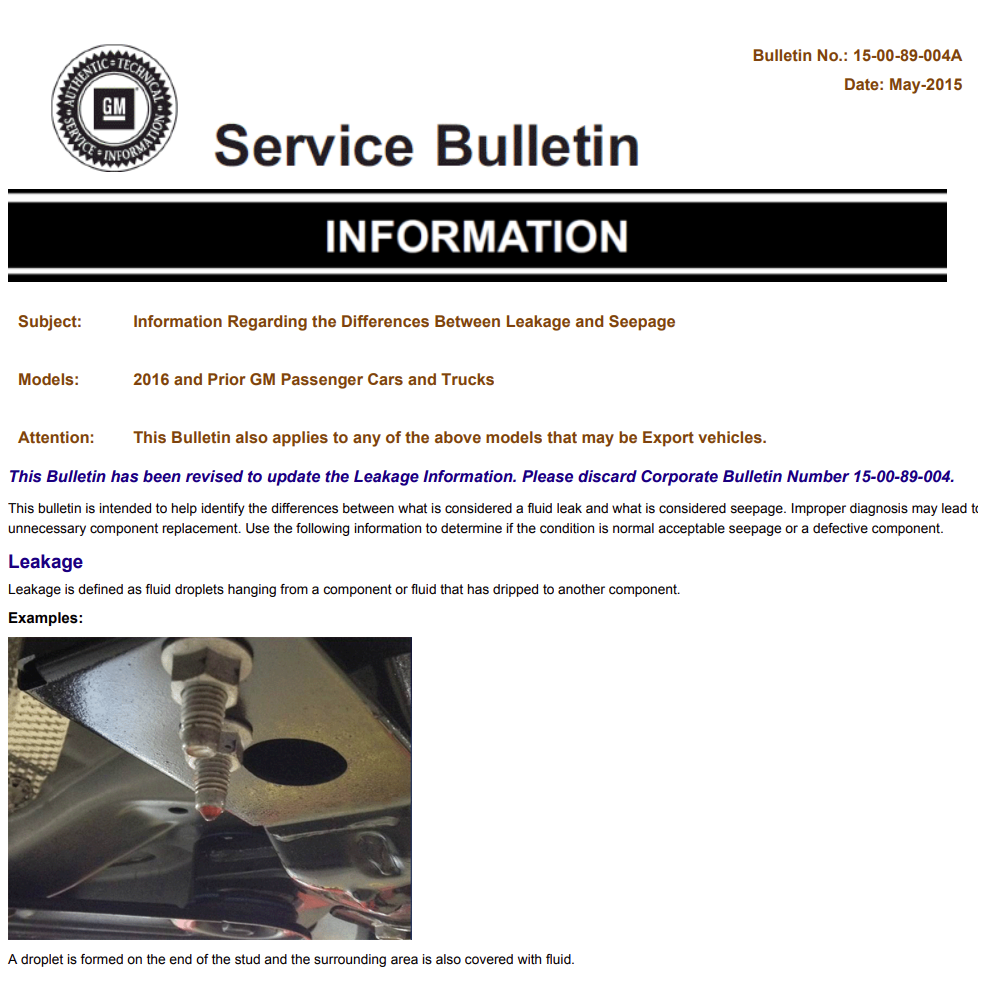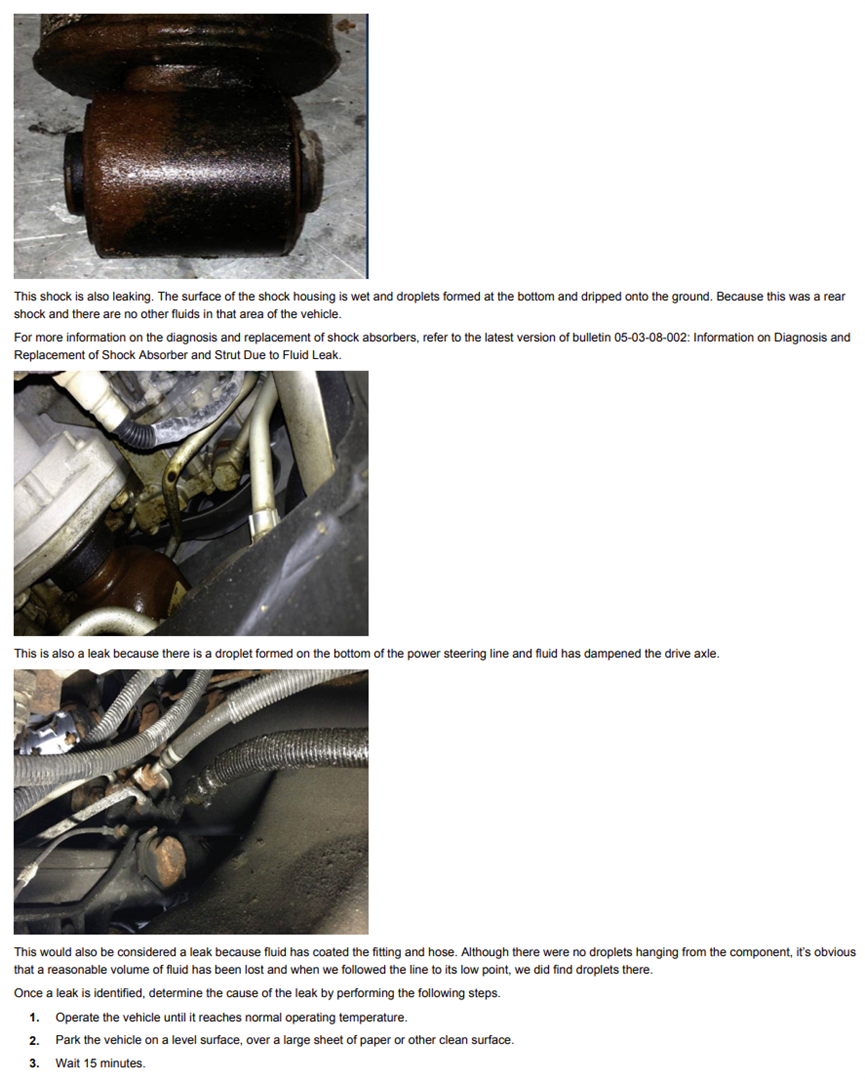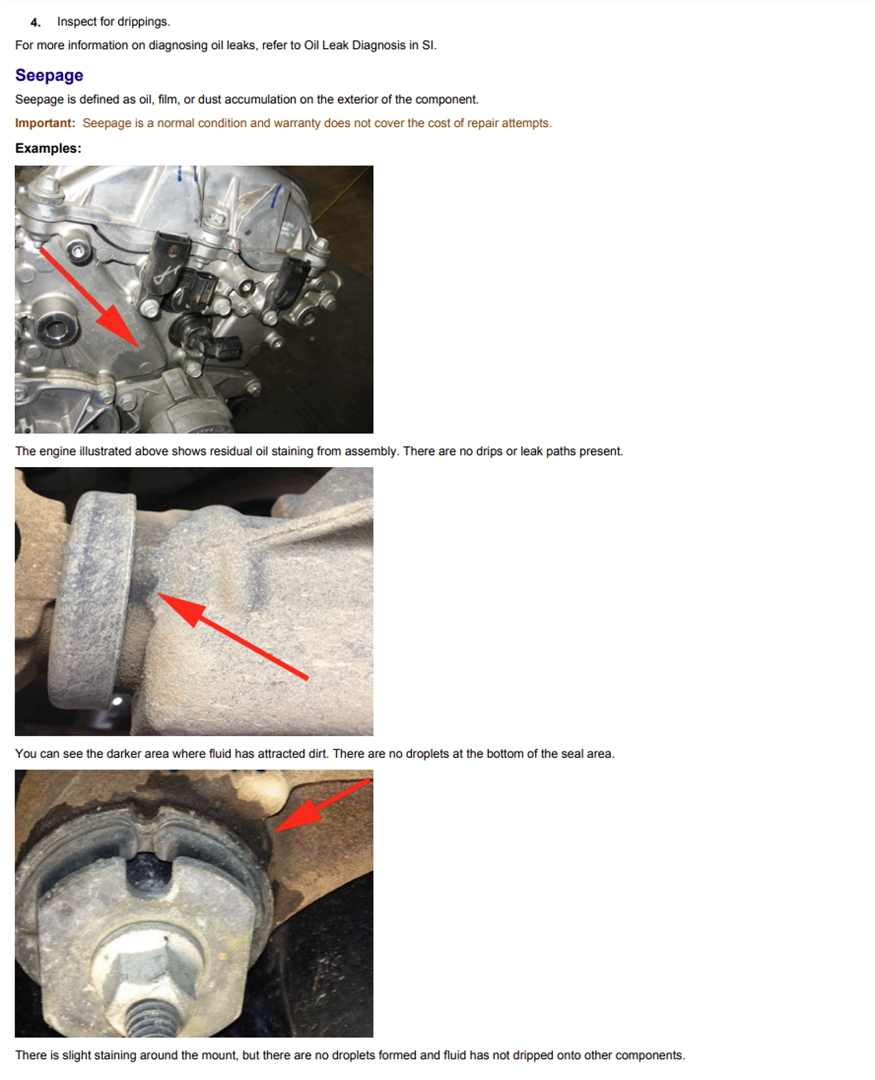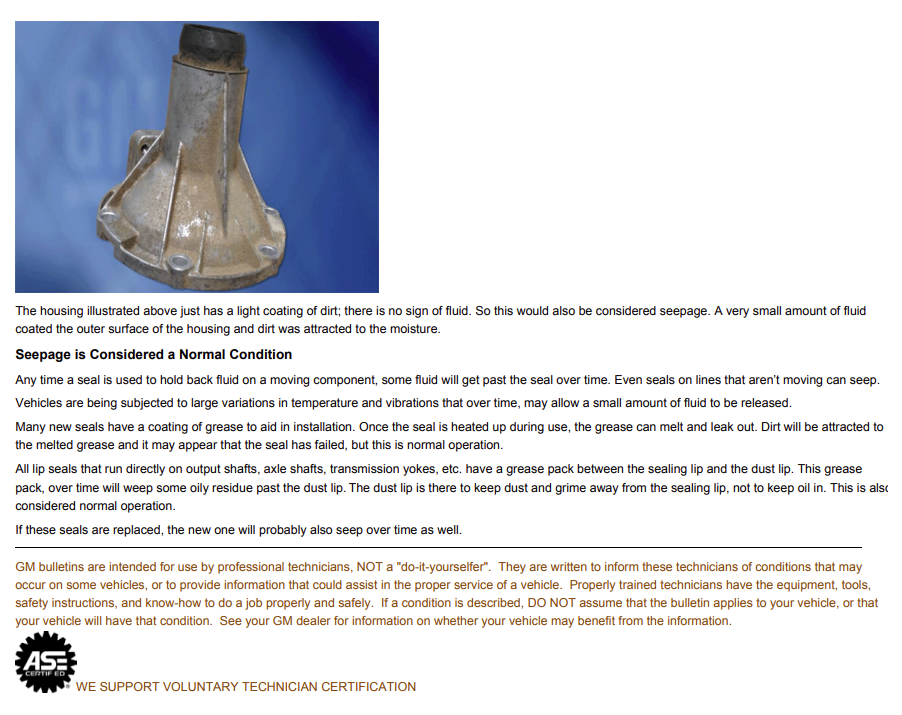Oil leak - when is it a problem?
Shops often find oil leaks when doing maintenance or repair on a car. So how does the
technician accurately describe the leak and how severe it is and how serious it is?
Oil leaks can range across the full continuum from effectively dry to fluid continuously running out and onto the ground. One end of the continuum is not serious at all and the other end is very serious as the component itself (engine, transmission, differential) may be damaged by a lack of lubrication, leading to very expensive repairs.
The severity of the oil leak needs to be described in some system that makes sense for the
technician and the service advisor and then the service advisor needs to be able to relate the information to the customer in such a way that the customer can make a reasonable decision about resolving the leak now versus waiting.
The Society of Automotive Engineers has previously produced this chart:
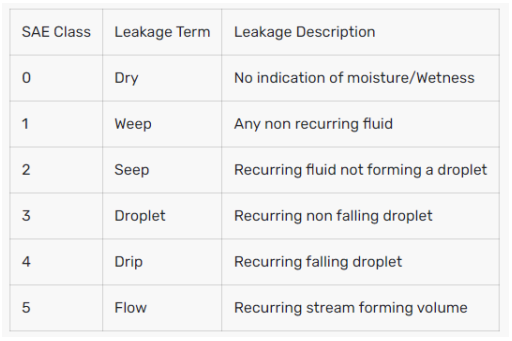
This chart is a good beginning in how to think about oil leaks, but the terms “weep” and “droplet” are not as clear as we might link.
So then there is a very clear Technical Service Bulletin from General Motors to address this issue with their dealer network. The first picture illustrates “seepage” where no drips are forming. Yes, there is oil on the outside, but it is not causing any issues.
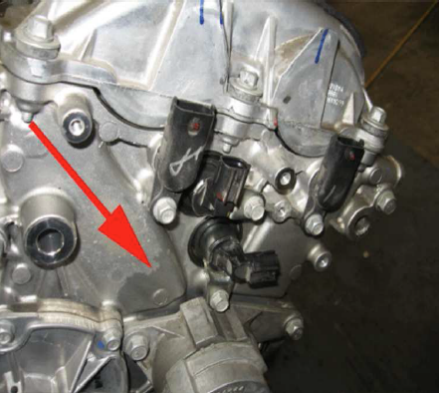
Quoting from the TSB: Seepage is Considered a Normal Condition
Any time a seal is used to hold back fluid on a moving component, some fluid will get past the seal over time. Even seals on lines that aren’t moving can seep.
Vehicles are being subjected to large variations in temperature and vibrations that over time, may allow a small amount of fluid to be released.
The next picture shows an actual oil drip hanging on a bolt. This is a real leak and likely needs to be addressed.
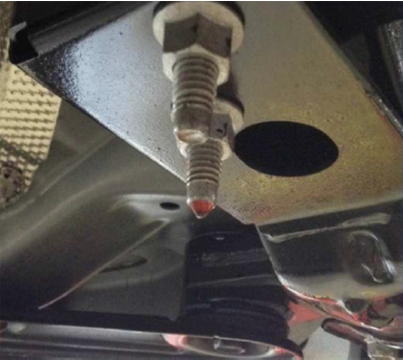
Leakage
Leakage is defined as fluid droplets hanging from a component or fluid that has dripped to another Component.
General Motors issued this Technical Service Bulletin as a way to help manage the cost of warranty on their vehicles. Their concern is simple: is there a failure that needs to be repaired under warranty - or not. Our communication needs add more specificity and subtlety to the mix.
We have used the following scale for years as a way to address the complexity of talking about oil leaks.
Dry
Seepage (This is just an observation, same as General Motors approach)
Severe seepage (No drips, this is something we will want to monitor)
Minor leak, meaning that the oil is spreading and will occasionally create a drip. (This is also something we will want to monitor, unless the oil is leaking onto another component that may be damaged by the leak, i.e., a rubber hose.)
Leak, meaning drips are being created (This probably needs to be fixed, although it depends on where it is and what it is leaking onto)
Major leak, meaning the fluid loss is significant and damage may occur. (This definitely needs to be fixed.)
For our purposes, attempting to get accurate information about the condition of a customer’s car from the technician to our customer, these terms and definitions work well, and have worked well for over three decades.
I hope this information helps, the next time you are faced with either describing a fluid leak, or someone is describing one to you.
For the really serious folks, the GM Technical Service Bulletin is reproduced in its entirety below.
